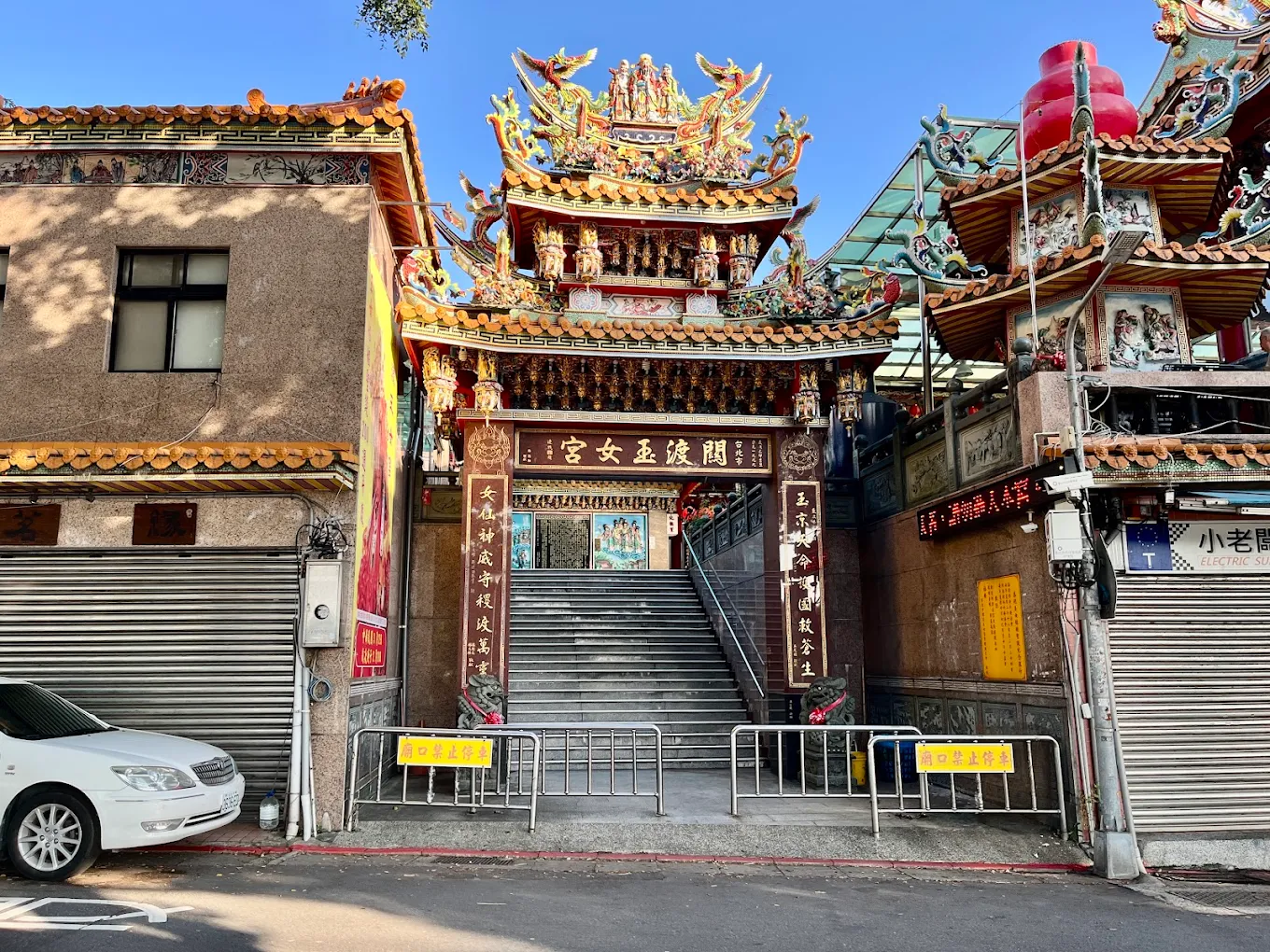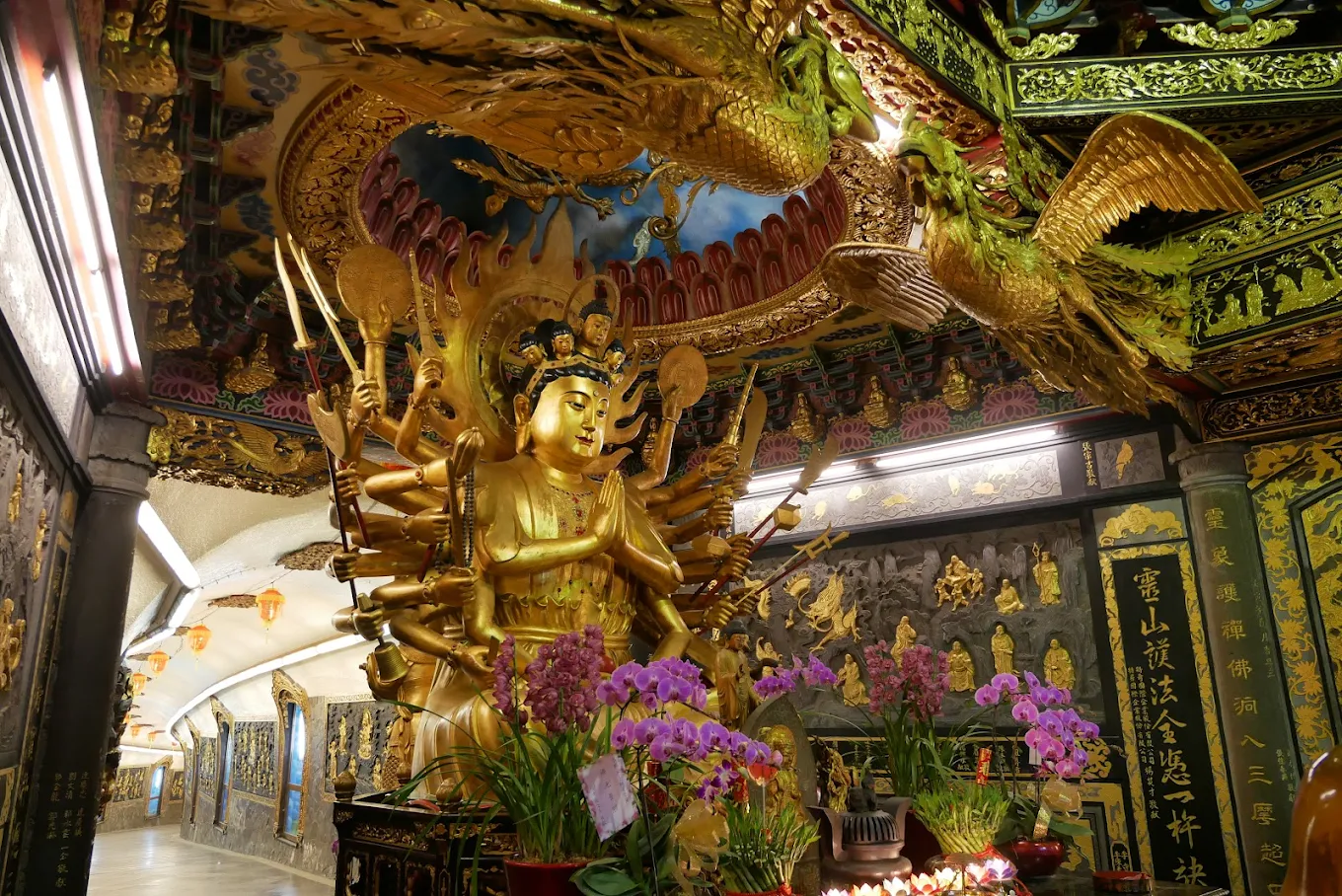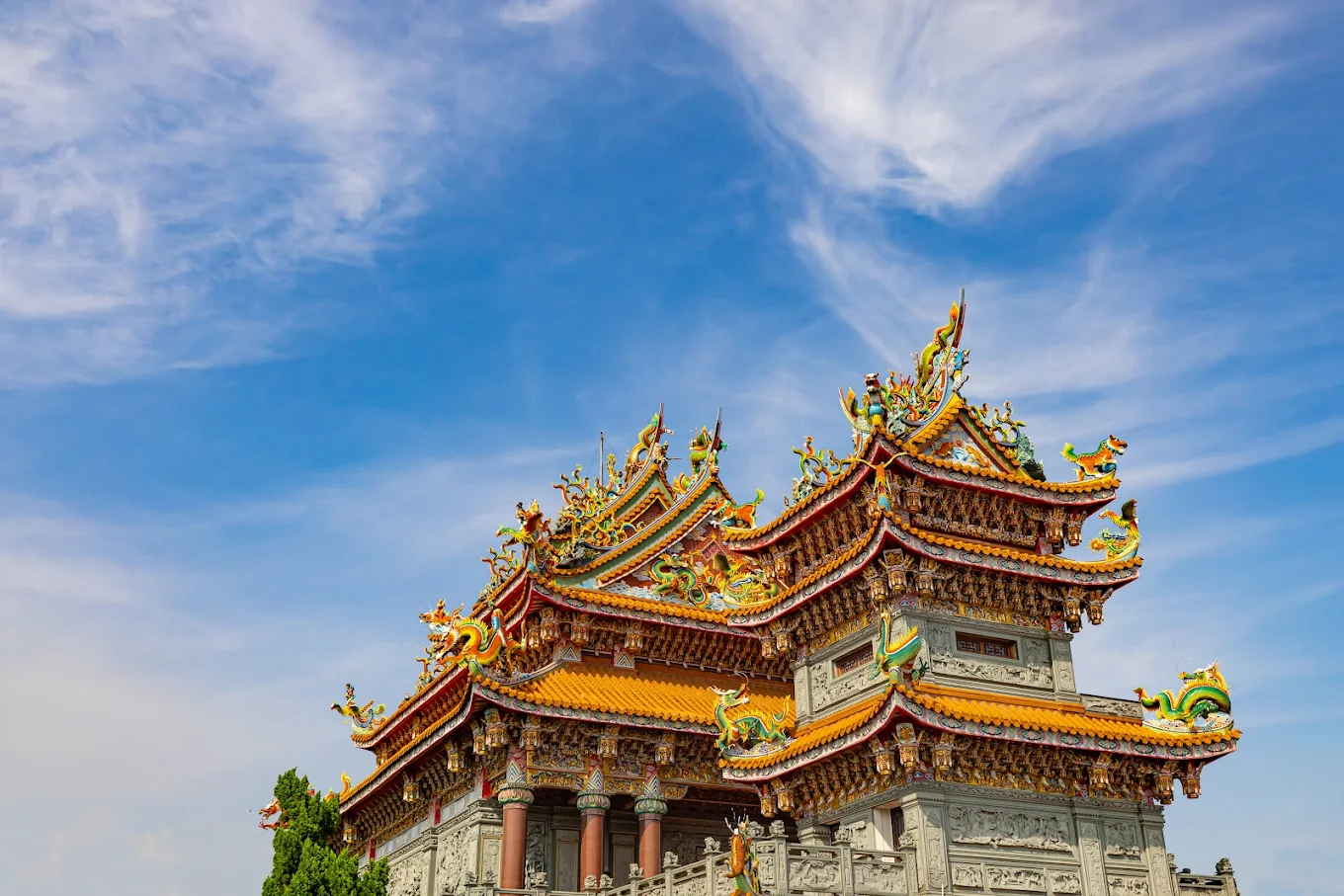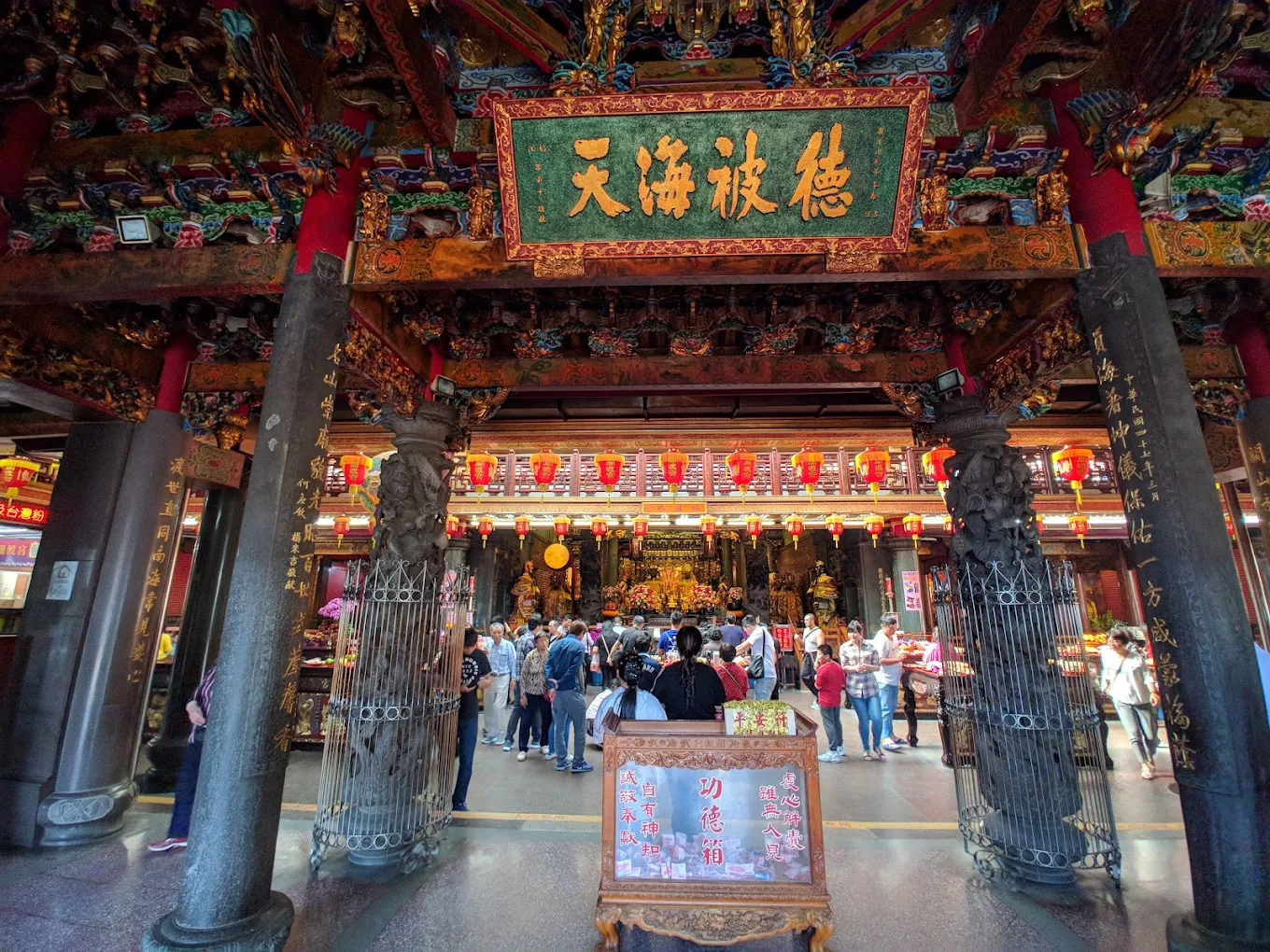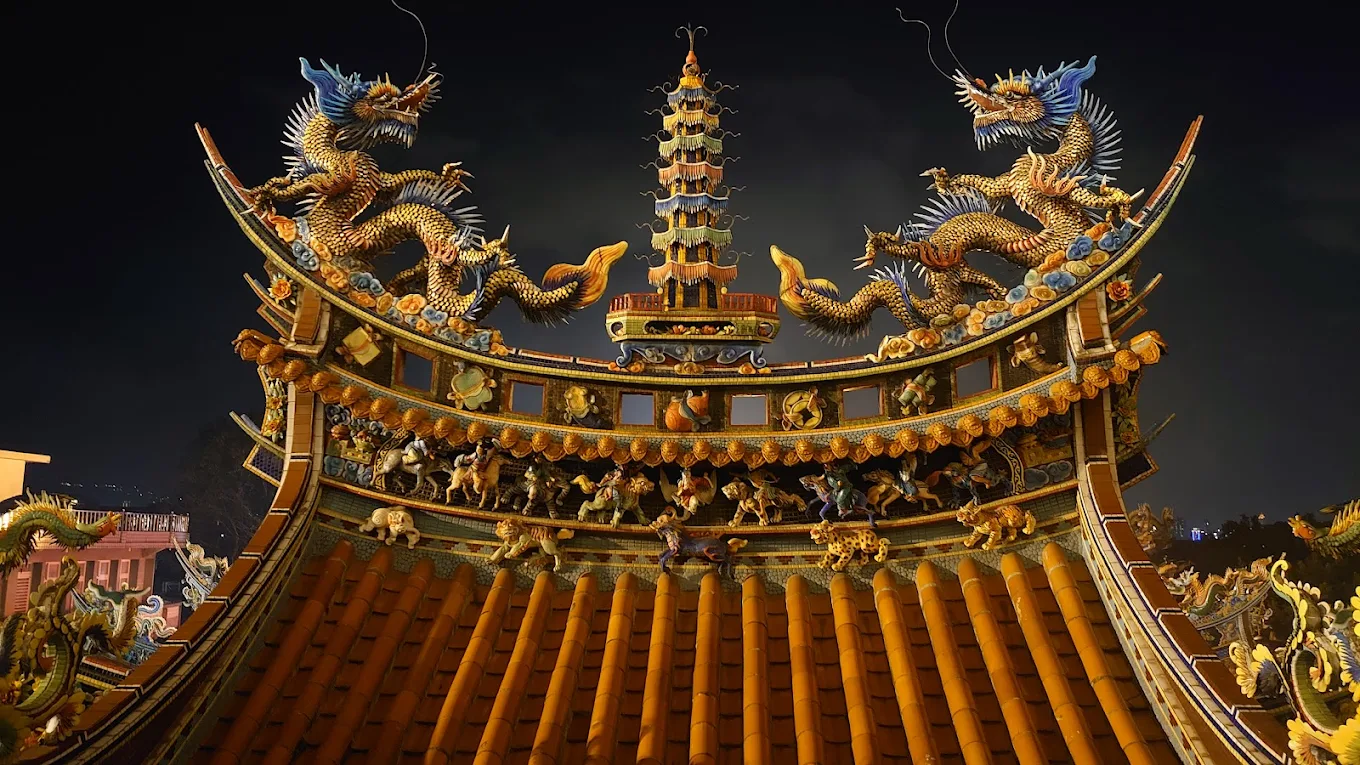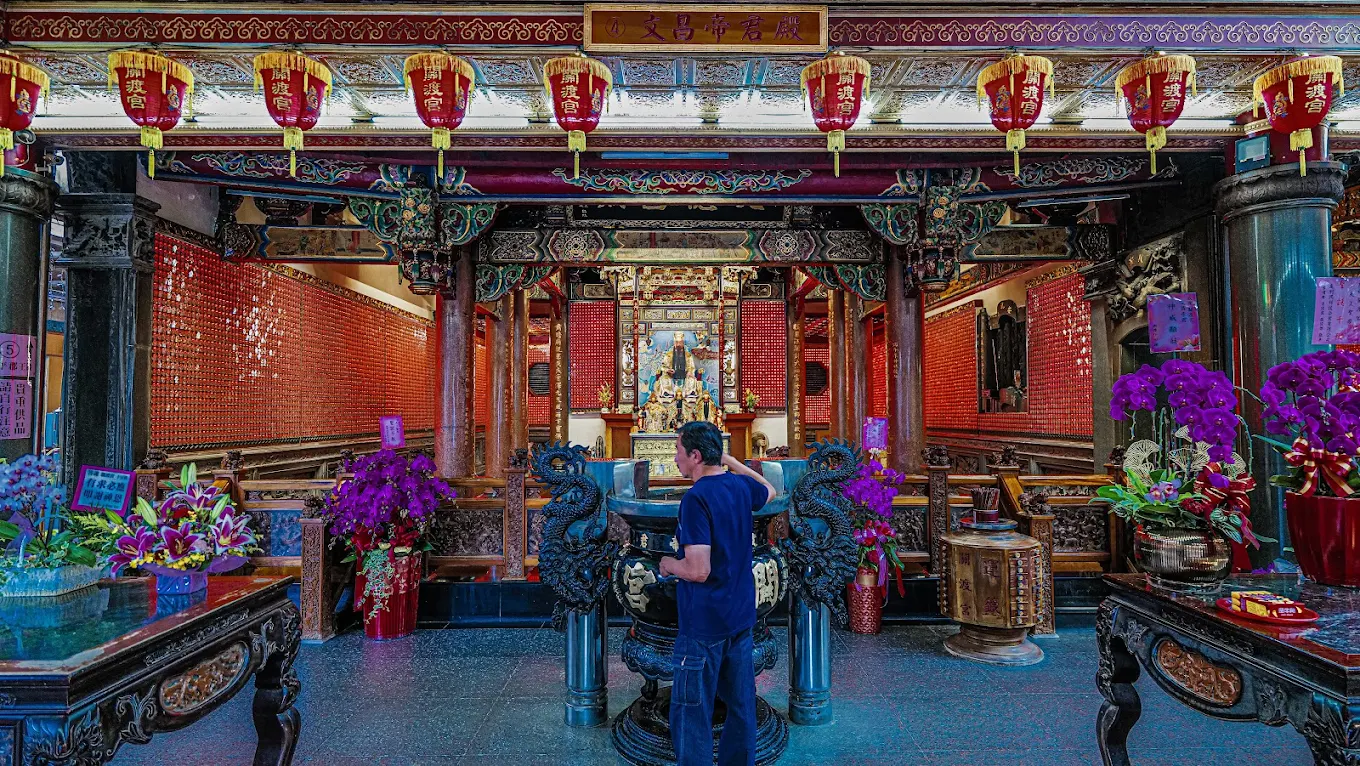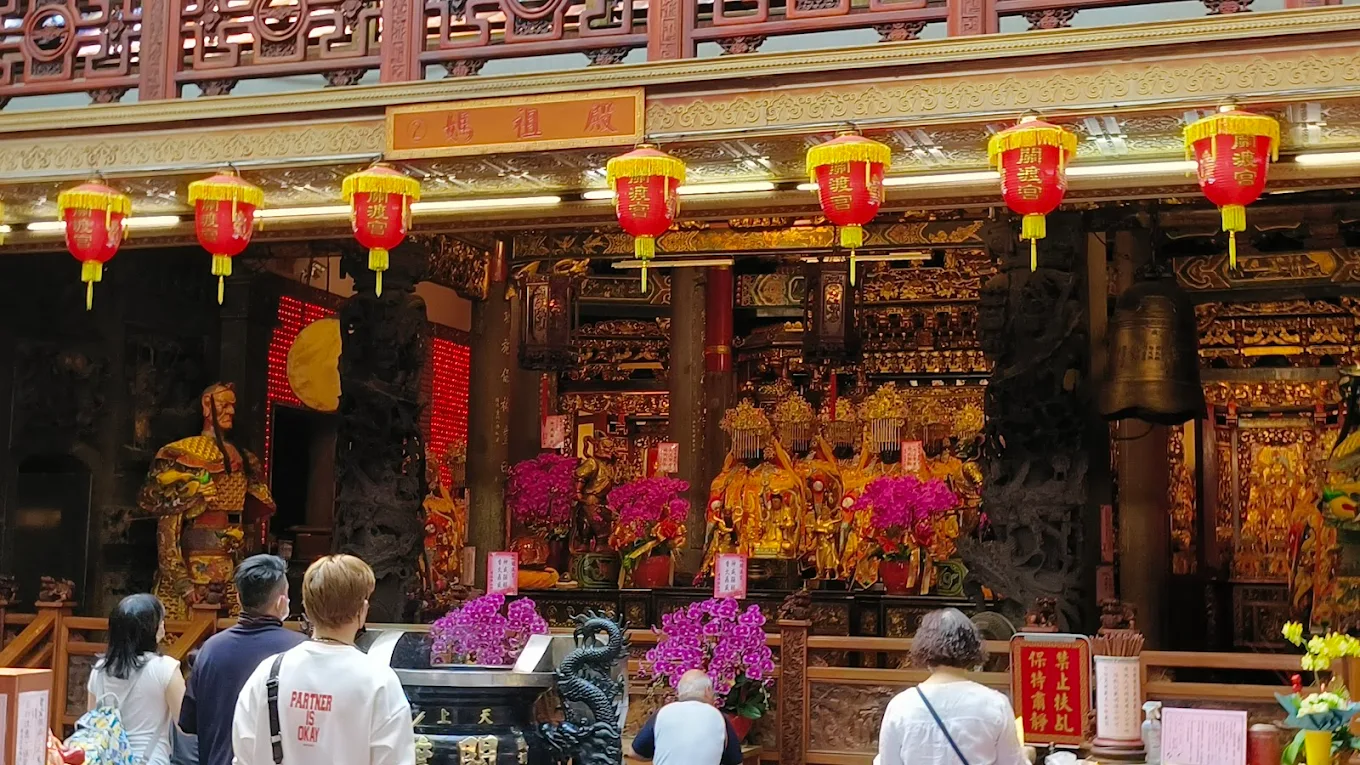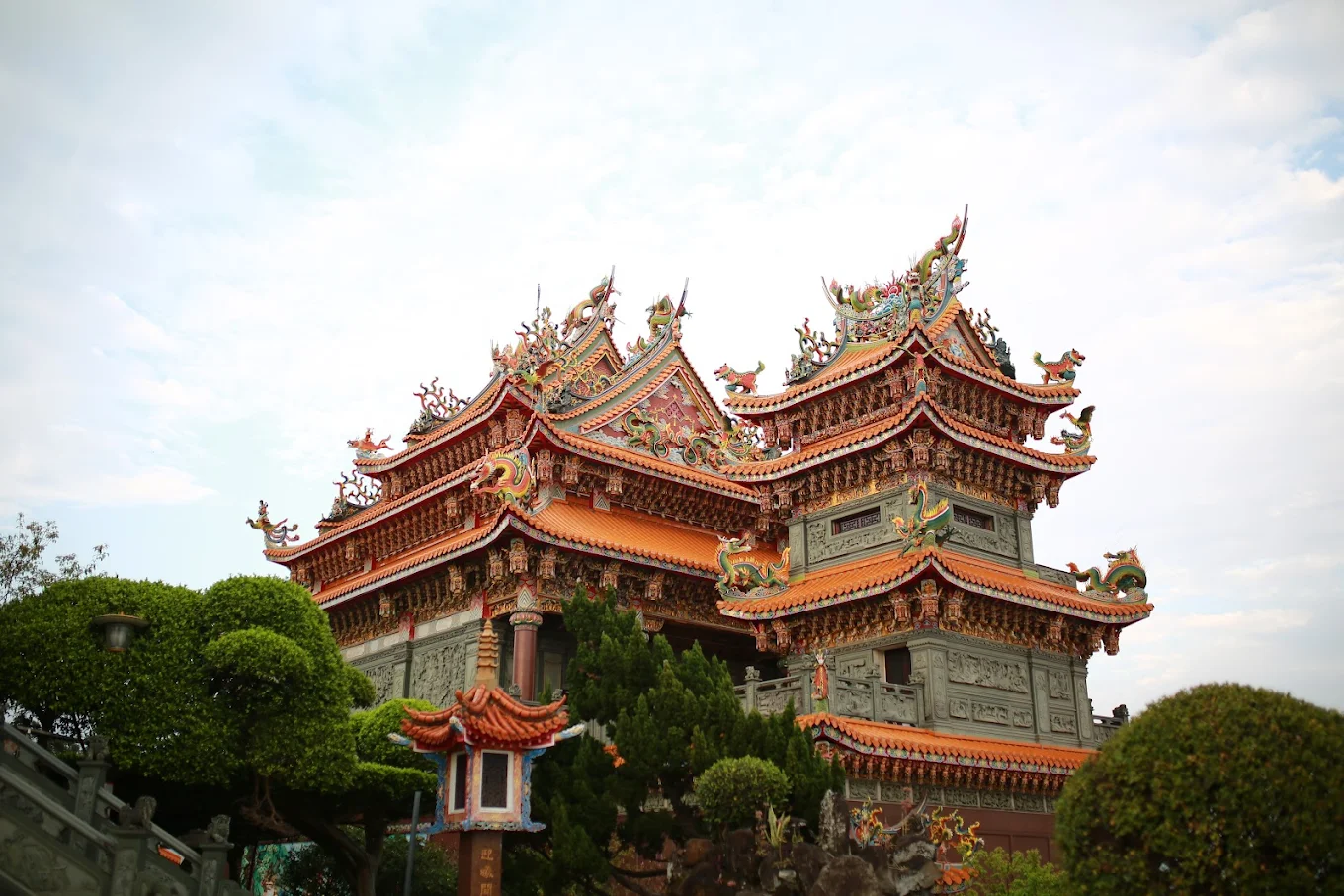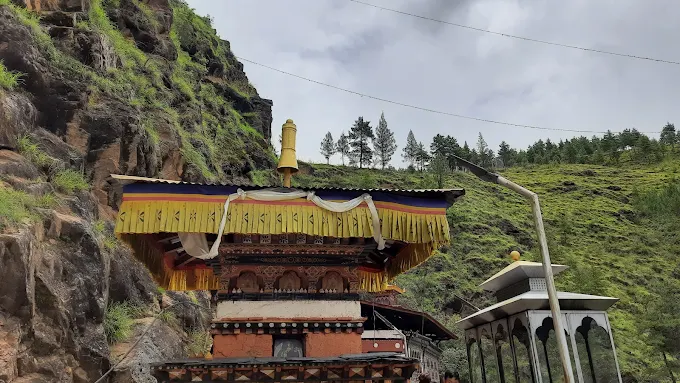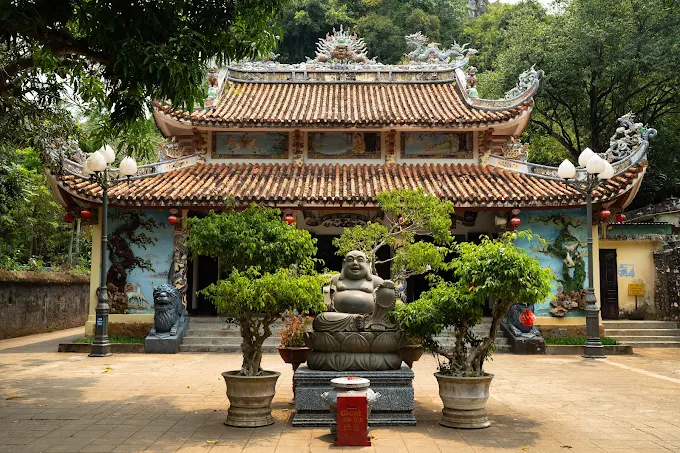Guandu Temple: The Fujianese Beacon of Beitou’s Maritime Devotion
Incense’s smoky tendrils curl around dragon-carved stone pillars, their weathered scales gleaming in dawn’s light at Guandu Temple, nestled on Taipei’s Zhixing Road. Founded in 1661 by Fujianese settlers, this sanctuary, originally Lingshan Temple, honors Mazu [Māzǔ], the Goddess of the Sea, a 10th-century figure deified for shielding sailors. Born Lin Mo in Meizhou, Mazu’s miracles—calming storms and guiding fishermen—made her Beitou’s maritime guardian, her camphor wood statue robed in azure. Guanyin [Guānyīn], the Bodhisattva of Compassion (Avalokiteshvara), also resides here, embodying boundless mercy, her statue in an 80-meter cave symbolizing salvation. A Taipei historical site, Guandu Temple’s intricate carvings and Mazu Procession invite travelers to feel Beitou’s riverside pulse, a Fujianese legacy woven into Taipei’s soul.
Overview and Significance
Introduction to Guandu Temple
Beitou’s shrine, established in 1661, embodies Taiwanese Folk Religion, blending Buddhist compassion, Taoist harmony, and maritime reverence. Its dragon-carved pillars and 80-meter Buddha cave distinguish it from Longshan’s bustle. Taiwanese Folk Religion fosters unity, guiding Beitou through seafaring rituals and charity. The temple draws cultural travelers to its Mazu devotion. Visiting Guandu Temple unveils Taipei’s maritime heritage.
Historical Journey
In 1661, Fujianese settlers from Meizhou, led by monk Zhang Fu, built Lingshan Temple on Ling Mountain to honor Mazu, seeking protection for voyages, as temple records note. The 1895 Japanese invasion, preceded by withered banyan trees signaling disaster, spared devotees who heeded Mazu’s warning, as oral histories recount. Rebuilt in 1921 under Japan’s Taisho era, it was renamed Guandu Palace. Renovations in 1960 preserved its Qing artistry, earning historical status. Guandu Temple history reflects Beitou’s resilience.
Cultural Significance
The Mazu Procession, held on the 23rd day of the 3rd lunar month, fills Beitou with palanquins, as fisherman Mr. Chen recalls his 1960s prayers for safe seas, uniting the community. Charity drives, aiding local fishermen, embody Mazu’s compassion, while navigation workshops draw Fujianese diaspora from Thailand. Guandu Temple history shapes Beitou’s seafaring identity.
Unique Legacy
Unlike Xiahai’s matchmaking rites, the temple’s dragon-carved pillars and Buddha cave symbolize maritime and spiritual salvation, a Fujianese hallmark. Its syncretic worship mirrors Taiwan’s pluralistic faith, centered on Mazu and Guanyin.
Community and Global Impact
The Mazu Procession unites Beitou residents, their chants echoing along Tamsui River. Pilgrims join rites, while workshops preserve Taipei’s seafaring heritage, fostering pride.
Historical Anecdotes
In 1895, three banyan trees withered overnight, signaling Japan’s invasion, allowing devotees to flee, a miracle credited to Mazu, etched in Beitou’s memory.
Social Role
The shrine strengthens Beitou’s bonds through festivals and charity, with lantern-making workshops drawing families, their laughter mingling with incense haze.
Artistic Influence
Qing stone carvings inspire Taipei’s artisans, their dragon motifs distinct from Longshan’s bronze reliefs, shaping temple art traditions. Exploring Guandu Temple rituals reveals this legacy.
- The shrine thrives in Beitou’s heart.
- Guandu Temple history unveils Fujianese resilience.
- Visiting Guandu Temple rituals offers cultural depth.
From Fujianese settlers’ 1661 prayers, travelers step into Mazu’s sanctuary, where maritime history weaves sacred devotion.
Architectural and Spiritual Features
Iconic Design
The multi-story Qing structure, carved into Ling Mountain, glows with red-tiled roofs, its dragon pillars shimmering under lantern light. Stone lions guard the entrance, unlike Longshan’s bronze pillars. Visiting Guandu Temple unveils this architectural splendor.
Worshipped Statues/Deities
Mazu’s camphor wood statue, robed in azure, radiates calm, its musky scent blending with incense. Born Lin Mo, her 10th-century miracles—calming storms—deified her as Beitou’s guardian, her gaze guiding devotees. Guanyin, the Bodhisattva of Compassion (Avalokiteshvara), resides in an 80-meter cave, her Thousand-Handed statue symbolizing salvation, her many eyes aiding all beings. Her Buddhist compassion complements Mazu’s Taoist protection. Guandu Temple architecture centers on these icons.
Signature Elements
Dragon-carved stone pillars, etched with swirling scales, symbolize maritime protection, a hallmark of Mazu’s sanctuary, distinct from Xiahai’s red threads.
Materials and Techniques
Meizhou artisan Lin Wei’s 1921 stonework, with wave patterns, showcases Qing precision, preserved in 1960 renovations, as temple records confirm.
Lesser-Known Features
Lotus reliefs in the Guanyin cave, their faded hues symbolizing Buddhist purity, offer meditative calm, contrasting the courtyard’s vibrancy.
Preservation Efforts
Beitou merchants funded 1960 renovations, restoring carvings with communal labor, ensuring the Qing legacy endures, a testament to devotion.
Environmental Integration
Feng shui aligns the temple with Tamsui River’s flow, its banyan trees fostering reflection amid Beitou’s bustle, a natural haven.
- Visit Mazu’s sanctuary for its Qing structure.
- Admire Guandu Temple architecture in Taipei.
- Exploring Guandu Temple rituals reveals artistry.
From the courtyard’s dragon-lit glow, travelers join the shrine’s sea-charged rituals, where Beitou’s devotion pulses.
Rituals and Practices
Daily Sacred Rites
Devotees offer incense, its haze rising, and pray before Mazu’s altar, seeking safe voyages, their murmurs echoing in the main hall. Gongs hum, anchoring Beitou’s faith.
Festival Traditions
The Mazu Procession, on the 23rd day of the 3rd lunar month, fills Beitou with palanquins, as fisherman Mr. Chen recalls his 1970s prayers for calm seas. Joining Guandu Temple rituals during this festival offers vibrancy.
Visitor Engagement
Travelers can join incense offerings, guided by volunteers, their hands tracing Fujianese devotion, immersing in Beitou’s faith. Visiting Guandu Temple offers this ritual immersion.
Spiritual Community Roles
Lay practitioners (jūshì) lead chants blending Buddhist and Taoist hymns, while monks maintain altars, roles rooted in Taiwanese Folk Religion’s spirit.
Interfaith Connections
Mazu and Guanyin’s worship weaves Buddhist compassion and Taoist mysticism, reflecting Taiwan’s pluralistic faith, unique to Guandu Temple rituals.
- Experience the temple’s rituals firsthand.
- Join Guandu Temple rituals during the Mazu Procession.
- Visiting Guandu Temple offers cultural immersion.
From prayer-filled halls, travelers explore tips to engage with Beitou’s sacred legacy.
Visitor Information
Navigating to Guandu Temple
Zhixing Road’s serene lanes lead to Mazu’s sanctuary, a 15-minute walk from Guandu MRT Station, with Tamsui River’s breeze nearby, a landmark in Beitou’s heart.
Address of Guandu Temple
No. 360, Zhixing Road, Beitou District, Taipei City, Taiwan.
Visiting Hours and Etiquette
Open 6 AM–9 PM, visitors should wear modest clothing, remove shoes in the main hall, and avoid photography during prayers, respecting Taiwanese Folk Religion customs, as signage advises.
Transport Options
Take the MRT to Guandu Station, a 15-minute walk via Dadu Road, Lane 301, or buses (223, 302, 308) to Guandu stop, weaving through Beitou’s scenic routes.
Cultural Immersion Opportunities
Join Mazu Procession workshops, crafting paper boats with locals like Ms. Lin, whose family prayed for safe voyages since the 1980s, a hands-on link to Fujianese heritage. Visiting Guandu Temple offers this immersion.
Photography Tips
Capture dragon pillars at dawn, low angles highlighting their scales, while respecting worshippers’ privacy, avoiding flashes in the Guanyin cave.
- Visit the temple via Taipei MRT.
- Explore Guandu Temple for festival workshops.
- Navigate to Guandu Temple in Taipei.
From offering incense in Beitou’s serene lanes, travelers explore the shrine’s philosophical depth.
Cultural and Spiritual Insights
Religious Philosophy
Taiwanese Folk Religion at Mazu’s sanctuary weaves Buddhist compassion with Taoist harmony, fostering maritime unity. Mazu’s guardianship ensures safe voyages, while Guanyin’s mercy aids all beings, guiding Beitou’s ethics. This syncretism, rooted in Fujianese values, shapes Taipei’s seafaring identity via rituals like the Mazu Procession. The temple’s philosophy grounds devotees in shared values. Visiting Guandu Temple unveils this depth.
Cultural Narratives
Legends of Mazu calming a 10th-century storm inspire Beitou’s devotion, as elder Mr. Wu recounts his grandfather’s 1930s tale of a saved fishing boat, cementing her protective lore.
Modern Cultural Connections
Mazu Procession posts on Instagram, tagged #GuanduTemple, draw younger devotees, linking Beitou’s heritage to Taipei’s digital culture. The temple connects to this vibrant scene.
- Discover the temple’s philosophy.
- Explore Guandu Temple narratives.
- Visiting Guandu Temple connects to modern culture.
From Beitou’s philosophical depths, travelers heed the call to explore Mazu’s vibrant legacy.
Why You Have to Visit
Dragon-carved pillars gleam under incense haze in Beitou’s serene courtyard, a Fujianese beacon of maritime devotion. Mazu’s protective legacy and Guanyin’s compassion, woven through vibrant Mazu Processions and Qing carvings, invite travelers to join Beitou’s rituals. Visiting Guandu Temple unveils Taipei’s seafaring soul, where Fujianese faith endures in timeless grace, a journey into the heart of maritime heritage.
- The temple is a must-see in Taipei.
- Experience Guandu Temple dragon pillars.
- Visiting Guandu Temple reveals Beitou’s heritage.
